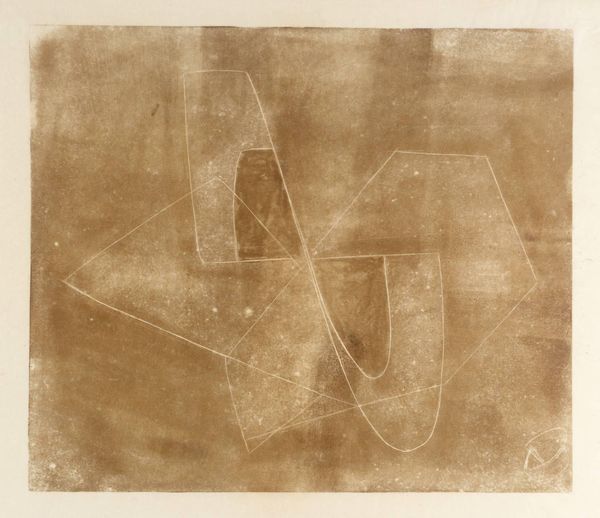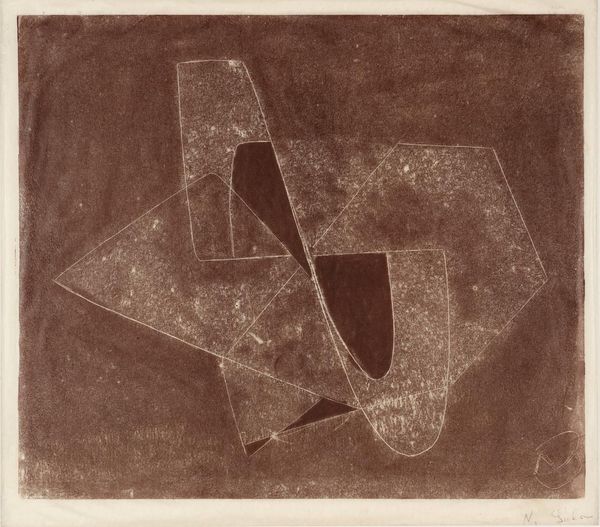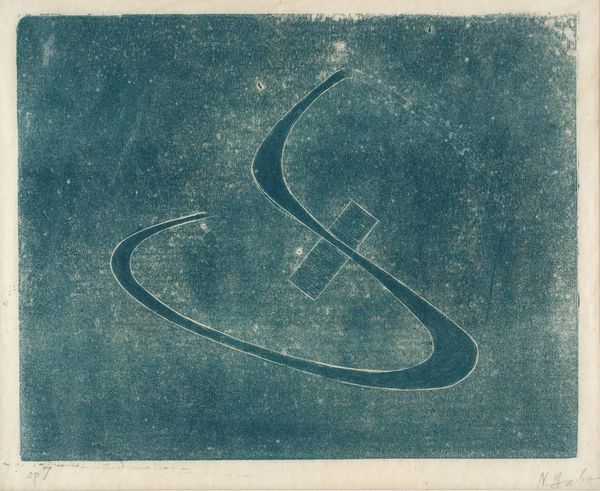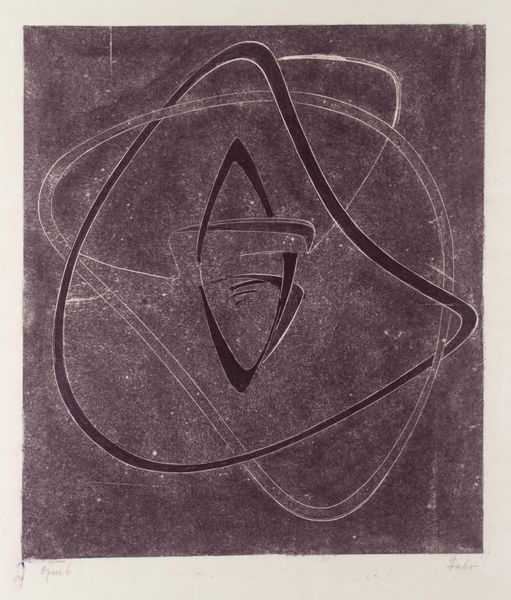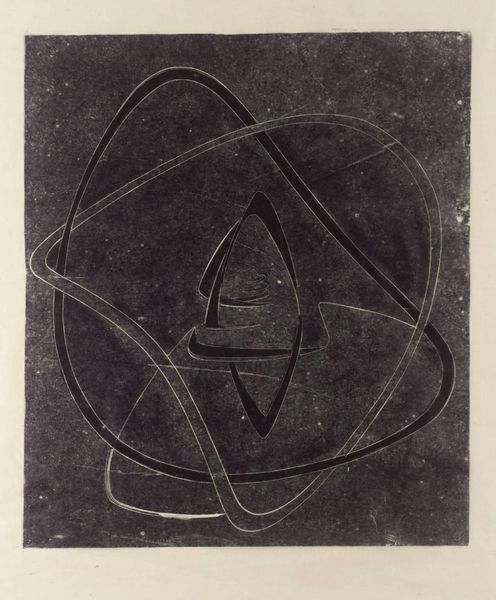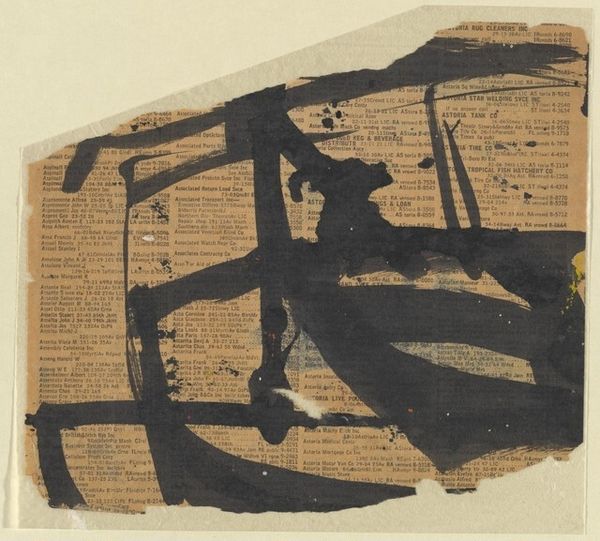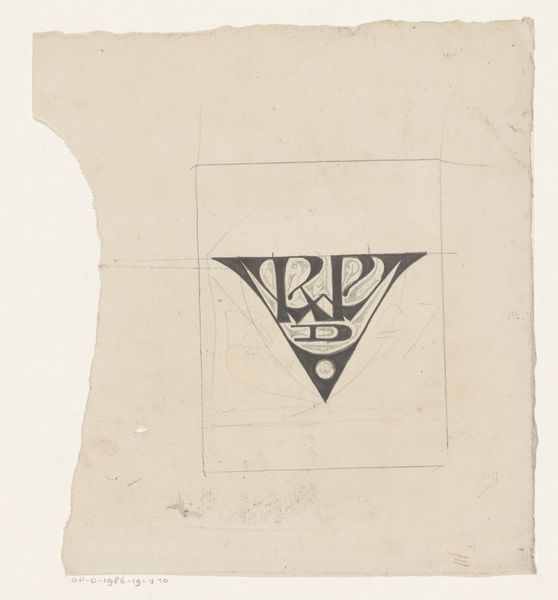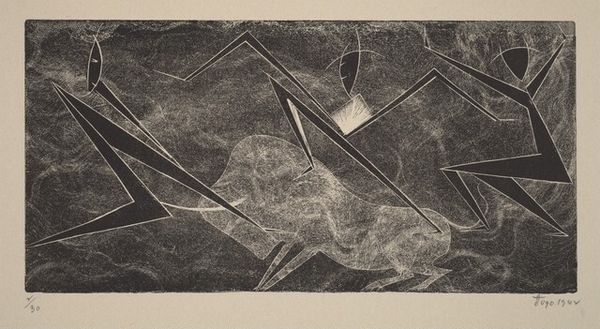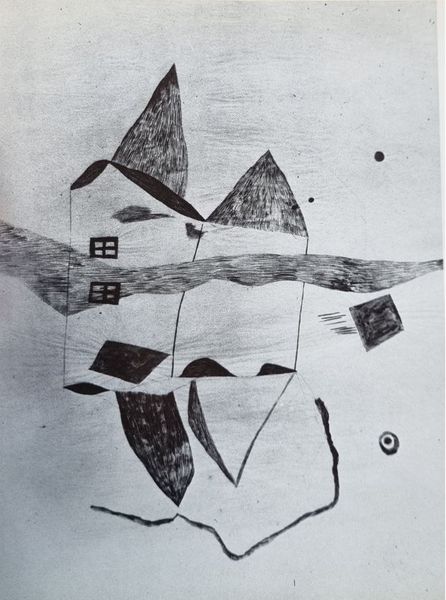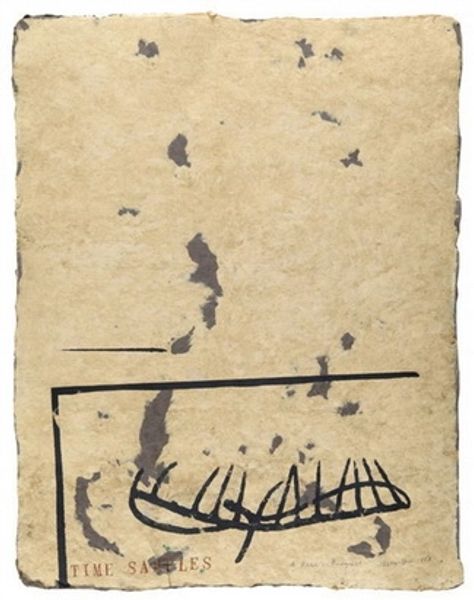
print, etching
# print
#
etching
#
etching
#
geometric
#
abstraction
#
line
Dimensions: plate: 17.78 × 23.81 cm (7 × 9 3/8 in.) sheet: 25.72 × 32.7 cm (10 1/8 × 12 7/8 in.)
Copyright: National Gallery of Art: CC0 1.0
Editor: This is an Untitled etching by John Ferren, created in 1935. There’s an almost ghostly feel to it, with these abstract geometric forms layered on top of each other. What kind of statement do you think Ferren was trying to make here? Curator: Well, let's consider the period. The 1930s were a time of enormous social and economic upheaval. Abstraction offered artists a way to engage with reality without directly representing it. I see this etching as part of a broader modernist project aimed at disrupting traditional modes of representation and challenging the established artistic order. The fractured geometric shapes mirror the fragmentation and uncertainty of the time. How does that resonate with you? Editor: That makes a lot of sense. The starkness of the lines, the muted tones... it definitely feels like a departure from, say, the romanticism that came before. I guess I'm also curious about why Ferren chose etching. Was there anything particularly significant about this medium during that time? Curator: Absolutely. Etching was more accessible than other printmaking techniques. This opened the door to more artists, even those who couldn't afford expensive materials or equipment. Therefore, it allowed for a democratization of art creation. Looking at it that way, do you see these lines and shapes now potentially carrying some form of radical potential? Editor: I do. I never really thought about printmaking as having that kind of social dimension before. It shifts how I interpret it entirely. Curator: Exactly. The “Untitled” quality becomes almost confrontational. Instead of giving viewers a roadmap, Ferren makes us participate in constructing the meaning ourselves within the social and artistic climate of the time. Editor: It's fascinating how understanding the context can unlock so much in a seemingly abstract piece. Curator: Indeed, the power of art resides in that intersection of intention and interpretation, influenced always by the tides of history and culture. I certainly have enjoyed viewing it with you today.
Comments
No comments
Be the first to comment and join the conversation on the ultimate creative platform.
